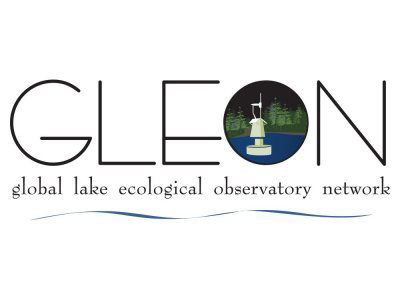

Eos Earth and Space Science News highlights paper by Miami scientists
Dark and stormy: How more rainfall leads to warm and murky lakes

Rachel Pilla at Lake Lacawac.
By Susan Meikle, university news and communications
Eos Earth & Space Science News highlighted a study by Rachel Pilla, Miami University doctoral student in biology.
The Eos Research Spotlights highlight the best accepted articles of Earth and space science. They are selected by the editors of American Geophysical Union journals.
Pilla and her co-authors found that decreased clarity in two northeastern Pennsylvania lakes has resulted in warmer surface water and cooler bottom water. But regional air temperatures in this area have remained stable during the last three decades.
In their study, they used 27 years of lake temperature profiles from Lake Giles and Lake Lacawac. Located in the Pocono Mountains, the small, temperate lakes differ in transparency. The researchers examined many potential drivers of surface water warming and increases in thermal stratification.
Murkiness — decrease in water clarity — allows sunlight and heat to become more completely absorbed near the surface of the lake. Less light and heat reach the deeper waters, leading to warmer surface waters and cooler deep waters.
The browning of the water is attributed to increases in annual precipitation. Rising lake pH due to recovery from acid rain deposition is also a factor, Pilla said.
These changes influence other aspects of the lake ecosystem — oxygen depletion can accelerate and alter the habitat availability for fish, algae and zooplankton.
Because a decrease in water clarity can enhance the effects of warming air temperatures, the results have important implications for understanding how lakes will respond to future environmental and climate change, say the study authorsPilla is a doctoral student in the Global Change Limnology Laboratory of Craig Wiliamson, Ohio Eminent Scholar of Ecosystem Ecology and professor of biology at Miami. She is researching a variety of lake responses to climate and environmental change using long-term data analyses, high-frequency sensor data and modeling efforts.
She received her master's degree from Miami in 2015.
Her paper, “Browning‐Related Decreases in Water Transparency Lead to Long‐Term Increases in Surface Water Temperature and Thermal Stratification in Two Small Lakes,” was published May 1 in the Journal of Geophysical Research Biogeosciences.
Co-authors in addition to Williamson are Jing Zhang and Thomas Fisher, both associate professors of statistics at Miami, Jennifer Bentrup, former doctoral student of Williamson and now a post doctoral researcher at Dartmouth College; Lesley Knoll, former Miami doctoral student of Mike Vanni and previous director of research and education at Lake Lacawac, Robyn Smyth from Bard College, and John Lenters from the University of Wisconsin.
GLEON, Big Data and MiEBDI
 Pilla is co-leading the Global Temperature Sentinels project — part of the Global Lake Observatory Network (GLEON) — and has compiled the world's largest dataset of long-term vertical temperature profile data for more than 150 lakes across the globe.
Pilla is co-leading the Global Temperature Sentinels project — part of the Global Lake Observatory Network (GLEON) — and has compiled the world's largest dataset of long-term vertical temperature profile data for more than 150 lakes across the globe.
With this "big data" she is working to understand the thermal changes in lakes over time and the primary climate and and other drivers of these changes.
Her work also is part of the new Miami Ecological Big Data Initiative (MiEBDI).
The MiEBDI facilitates student and faculty access to and analysis of ecological "big data" from around the world to address critical threats to ecosystems and the valuable services that they provide.
